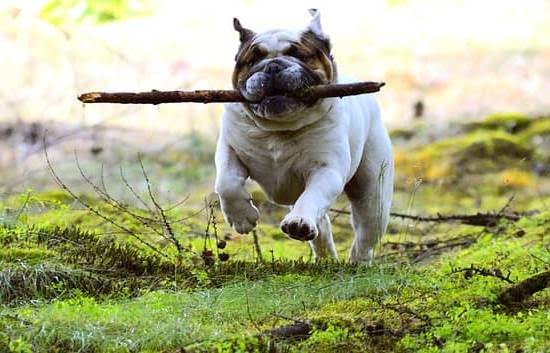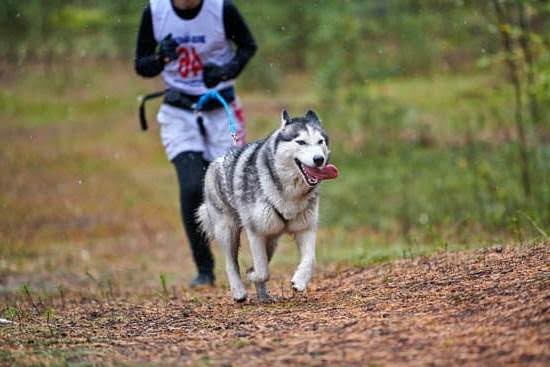If you’ve ever wondered how to train your dog not to chase goats, you’re not alone. Many dog owners struggle with this challenging behavior, but with the right techniques and training, it is possible to curb this instinctual behavior in your furry friend.
Understanding why dogs chase goats is the first step in addressing this issue. Dogs are natural predators and herding animals, so the sight of a fast-moving goat can trigger their instinct to give chase. This behavior can be dangerous for both the dog and the goats, making it important for pet owners to take proactive steps to address and correct it.
In this article, we’ll explore the dangers of unchecked dog behavior and discuss how building a strong foundation with basic obedience training can help address chasing tendencies in dogs. We’ll also delve into desensitization techniques for goat exposure, positive reinforcement methods for curbing chasing behavior, utilizing distraction and redirecting techniques, implementing boundary training and leash control, seeking professional help when necessary, and celebrating success while maintaining consistency.
The Dangers of Unchecked Dog Behavior
Dogs have a natural instinct to chase after small animals, including goats. This behavior can be attributed to their predatory nature and high prey drive. Understanding this natural inclination is crucial in addressing the issue of dogs chasing goats. It’s important for dog owners to realize that this behavior is not necessarily due to aggression or malicious intent, but rather a result of their innate instincts.
Unchecked dog behavior, such as chasing goats, can pose significant dangers to both the goats and the dogs themselves. Goats are vulnerable to stress and injury when being chased by dogs, which can lead to decreased milk production in dairy goats or injuries that could potentially be fatal.
On the other hand, dogs that chase goats are at risk of encountering larger livestock with potential for serious injury. Additionally, the legal repercussions for dog owners whose pets cause harm to farm animals can be severe.
It is important for dog owners to recognize the potential dangers associated with unchecked behavior in order to take proactive steps towards addressing and correcting this issue. By acknowledging these risks, pet owners can better understand the importance of training their dogs not to chase goats and preventing any negative consequences from occurring.
| Unchecked Dog Behavior | Potential Dangers |
|---|---|
| Pose threats to farm animals | Injuries or even death |
| Risks associated with encountering larger livestock | Legal repercussions for pet owners |
Building a Strong Foundation With Basic Obedience Training
Dogs have a natural instinct to chase animals, including goats. This behavior can be triggered by prey drive, herding instincts, or simply the desire to play. Understanding why your dog is chasing goats is the first step in addressing and correcting this behavior. By recognizing the root of the problem, you can tailor your training approach to effectively discourage chasing behavior.
The Dangers of Unchecked Dog Behavior
Allowing your dog to freely chase goats can pose serious risks not only to the goats but also to your dog. Chasing can cause injury or even death to the animals being pursued and may lead to aggressive reactions from their owners. For dogs, running loose in farmland or areas with livestock can result in injury from farm equipment, exposure to toxic plants, or confrontation with other potentially dangerous animals such as coyotes or wolves.
Establishing a solid foundation with basic obedience training is crucial in addressing your dog’s tendency to chase goats. Training commands like “sit,” “stay,” “come,” and “leave it” are essential tools that will allow you to communicate effectively with your dog and control their behavior in various scenarios. Consistent and positive reinforcement during obedience training will set the stage for successful goat-chasing prevention.
Desensitization Techniques for Goat Exposure
Understanding the Root of the Behavior
Before implementing desensitization techniques, it’s important to understand why dogs chase goats in the first place. For some dogs, it may be a prey drive that is triggered when they see the movement of the goats. For others, it may be a territorial behavior. Understanding the root cause will help in developing an effective desensitization plan.
Gradual Exposure to Goats
One of the key desensitization techniques for goat exposure is to gradually expose your dog to goats in a controlled environment. This can be achieved by starting at a distance where your dog can see the goats but not feel threatened or overly excited. Over time, gradually decrease the distance while observing your dog’s behavior and providing positive reinforcement for calm behavior.
Counter-Conditioning Strategies
In addition to gradual exposure, counter-conditioning strategies can also help desensitize your dog to goats. This involves pairing the sight or presence of goats with something positive, such as treats or praise. By creating positive associations with goats, you can help reduce your dog’s instinct to chase them. It’s important to be patient and consistent with these techniques, as changing ingrained behaviors takes time and dedication.
By implementing these desensitization techniques for goat exposure, pet owners can work towards modifying their dog’s behavior and preventing them from chasing goats. It’s essential to approach this training process with patience and consistency, celebrating small successes along the way.
Positive Reinforcement Methods for Curbing Chasing Behavior
Positive reinforcement is a powerful tool that can be used to effectively curb a dog’s chasing behavior. This method involves rewarding your dog for exhibiting the desired behavior, in this case, not chasing goats. By using positive reinforcement, you can encourage your dog to make the right decision when faced with the temptation to chase.
Using Treats and Affection
One of the most common forms of positive reinforcement is using treats and affection to reward your dog. Whenever your dog shows restraint and refrains from chasing goats, immediately praise them and offer a small, tasty treat as a reward. Over time, your dog will associate not chasing goats with receiving something they enjoy, making it more likely for them to continue exhibiting the desired behavior.
Clicker Training
Another effective method for positive reinforcement is clicker training. This involves using a small device that makes a clicking sound to mark the moment your dog performs the desired behavior. Each time your dog chooses not to chase goats, use the clicker followed by a treat to reinforce their good decision. With consistent use of the clicker, your dog will learn to associate the sound with positive outcomes and will be more likely to repeat the behavior.
Consistency Is Key
It’s important to be consistent when utilizing positive reinforcement methods. Always reward your dog when they exhibit appropriate behavior, even if it’s just a small sign of improvement. Inconsistency can confuse your dog and diminish the effectiveness of positive reinforcement. By consistently rewarding your dog for not chasing goats, you can effectively curb this behavior over time.
By incorporating positive reinforcement methods into your training routine, you can effectively curb your dog’s chasing behavior while strengthening your bond with them through praise and rewards. Remember that every dog is unique and may respond differently to various forms of positive reinforcement, so be patient and observant as you work with your furry friend.
Utilizing Distraction and Redirecting Techniques
When training your dog not to chase goats, utilizing distraction and redirecting techniques can be effective in breaking their habit of chasing after small animals. Dogs are naturally curious and easily distracted, so redirecting their attention to something else can help deter them from chasing goats.
One effective technique is using a toy or treat to divert your dog’s attention away from the goats. When you notice your dog becoming fixated on the goats, quickly intervene by presenting a toy or treat that they enjoy. This will redirect their focus and encourage them to engage with the toy or treat instead of pursuing the goats.
In addition to using toys or treats, you can also utilize verbal commands to redirect your dog’s behavior. Teaching your dog commands such as “leave it” or “look at me” can be helpful in steering their attention away from the goats. When you see your dog starting to fixate on the goats, use these commands to redirect their focus back to you.
Another effective method for distraction and redirection is engaging your dog in play or training exercises when in the presence of goats. By keeping your dog mentally stimulated and physically active, they are less likely to become fixated on the goats and more focused on interacting with you. This can help reinforce positive behaviors and reduce their desire to chase after the goats.
These distraction and redirecting techniques should be consistently implemented during goat exposure training sessions to help discourage chasing behavior in your dog. By redirecting their attention towards positive alternatives, you can effectively curb their instinctual urge to chase after goats.
Implementing Boundary Training and Leash Control
One of the most effective ways to train your dog not to chase goats is by implementing boundary training and leash control. Establishing boundaries is crucial in teaching your dog where they are allowed to go and what behavior is acceptable. Leash control allows you to physically guide your dog and prevent them from chasing goats when you’re out in an environment where they may be present.
When implementing boundary training, it’s important to start in a controlled environment such as your backyard or a fenced area. Use commands like “stay” or “leave it” when your dog shows interest in the goats, and reward them for obeying. Consistency is key in this training method, so make sure that all family members are on board and using the same commands and techniques.
Leash control goes hand in hand with boundary training, as it allows you to physically intervene if your dog attempts to chase goats. A sturdy leash and collar are essential tools for this method, as they give you the ability to redirect your dog’s attention and prevent them from engaging in unwanted behavior.
Gradually introduce your dog to areas where there may be goats while maintaining firm control over the leash, giving them praise and treats for good behavior. With time and practice, boundary training and leash control can effectively teach your dog not to chase goats.
Seeking Professional Help When Necessary
Some dogs have a strong instinct to chase animals such as goats. This behavior can be dangerous for both the dog and the goat, and it is important to address it through proper training and management strategies. While some dog owners may be able to successfully train their dogs on their own, there are times when seeking professional help becomes necessary.
When a dog’s chasing behavior towards goats is especially persistent or difficult to manage, it may be beneficial to consult with a professional dog trainer or behaviorist. These professionals have the knowledge and expertise to assess the root cause of the behavior and develop a customized training plan to address it effectively.
Here are some reasons why seeking professional help may be necessary:
- If previous training efforts have been unsuccessful in curbing the chasing behavior.
- If the dog’s chasing behavior poses a significant risk to the safety of goats or other animals.
- If the dog displays aggressive behavior towards goats when chasing them, posing a potential danger to both animals and humans.
Professional trainers and behaviorists can offer specialized guidance and support in addressing complex behavioral issues like goat chasing. They can provide insights into canine psychology, implement advanced training techniques, and offer ongoing assistance to ensure that progress is made effectively. Additionally, they can work with dog owners to develop realistic goals and strategies for long-term success in managing this challenging behavior.
Celebrating Success and Maintaining Consistency
In conclusion, training a dog not to chase goats requires patience, dedication, and consistency. Celebrating success along the way is important to reinforce positive behavior and encourage continued progress. It’s crucial to remember that every dog is different and may require varying methods of training, so remaining consistent in your approach is key.
Once you have successfully trained your dog not to chase goats, it’s important to maintain that behavior. Consistency in reinforcing the desired behavior will help ensure that your dog continues to follow commands and resist the urge to chase goats. This may involve regular practice sessions, ongoing reinforcement of obedience commands, and continued exposure to goats in a controlled environment.
Finally, seeking professional help from a certified dog trainer or behaviorist can be beneficial if you are struggling to train your dog not to chase goats. They can offer personalized guidance and support based on your dog’s individual needs. Remember that successful training requires time and effort but the rewards of having a well-behaved dog will make the process worthwhile. With commitment and consistency, it is possible for your dog to coexist peacefully with goats and other animals.
Frequently Asked Questions
How Do I Get My Dog Used to Goats?
Getting your dog used to goats requires patience, consistency, and positive reinforcement. Start by introducing them to the goat’s scent and giving them plenty of opportunities to observe the goats from a safe distance. Gradually increase their interactions while monitoring their behavior closely. Use treats and praise to reward calm and non-threatening behavior around the goats.
How Do I Stop My Dog From Chasing Livestock?
To stop your dog from chasing livestock, you’ll need to work on obedience training and impulse control. Teach your dog a strong “leave it” or “recall” command so you can redirect their attention when they show interest in chasing livestock. Consistent training, supervision, and providing plenty of mental and physical stimulation can help reduce this behavior over time.
How Do You Train a Dog to Guard Goats?
Training a dog to guard goats involves teaching them basic obedience commands such as “stay”, “watch”, and “leave it”. You’ll also want to introduce them to the goats gradually while reinforcing positive behavior with treats and praise.
It’s important to socialize your dog with the goats from an early age so they form a bond with the animals they are meant to protect. Consistent training and supervision are crucial for success in this endeavor.

Welcome to the blog! I am a professional dog trainer and have been working with dogs for many years. In this blog, I will be discussing various topics related to dog training, including tips, tricks, and advice. I hope you find this information helpful and informative. Thanks for reading!





